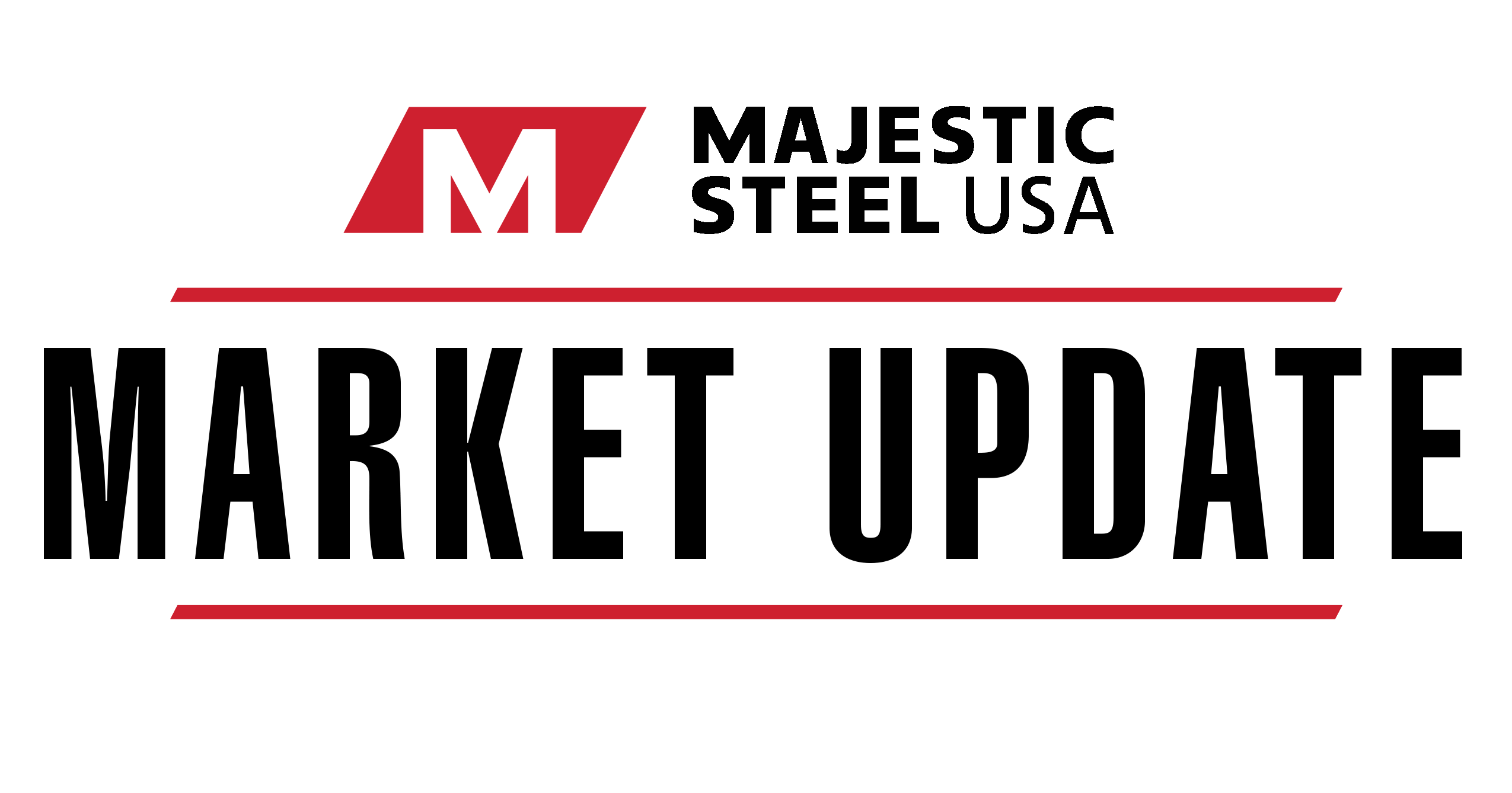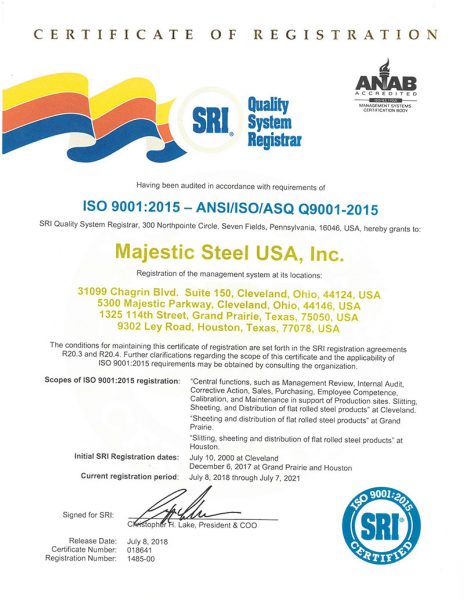Market Update | May 01, 2024
ECONOMIC ACTIVITY IN THE MANUFACTURING SECTOR SLIPPED BACK INTO CONTRACTION
Economic activity, from the manufacturing sector, slipped back into contraction in April after a brief stint in expansion in March. The April ISM Manufacturing Index came in at 49.2, down slightly from the 50.3 reading in March. The twelve-month average increased to 47.8, its highest level since last August. While production continued to grow, just at a slower rate than in March, new orders moved back into contraction after expanding previously. Within the new orders component, three of the six sectors (including fabricated metal products) reported increased new orders.
Input Costs
Zinc pricing continued to push higher this week, now up for the fifth consecutive week.
- Zinc pricing came in at $1.29/lb this week, up from $1.27/lb previously and is near its highest level in a year.
Spot iron ore pricing was flat this week, climbing to $126/mt.
- Rising inventories and low steel mill profitability in China, combined with weaker steel demand in 2024, have negatively impacted iron ore pricing since the start of the year.
Coking coal pricing rebounded this week on the back of increased demand.
- The current coking coal pricing of $253/mt, up 11.9% from last week but is down 3.3% from this time last month.
SUPPLY
U.S. raw steel production continued to slide last week, now down for the third consecutive week.
-
- U.S. steelmakers produced 1.701 million tons at a 76.6% utilization rate.
- Production was down 0.9% from the prior week and down 3.8% from the same week last year.
- YTD production is down 2.9% from the same timeframe last year.
- U.S. steelmakers produced 1.701 million tons at a 76.6% utilization rate.
DEMAND
Manufacturing activity in the Chicago region continued to contract in April and is now down for the fifth consecutive month.
-
- The Chicago PMI came in at 37.9, down from 41.4 in March and is below the 48.6 reading from last April.
-
-
- The current reading is at its lowest level in seventeen months.
- Declines in the new orders, production, and employment components all contributed to the overall decline.
- The only positive of the report was a slight increase in the order backlog component.
- With the report, respondents noted their biggest concerns being geopolitical conflicts, supply shortages, cyber-attacks, government regulations, and public health crises.
-
After a flat reading in February, total construction spending slipped on a seasonally adjusted basis in March.
-
- Total spending is now down for the second time in the last three months, sliding 0.2% to a $2.084 trillion rate.
-
- Within total spending a slight recovery in non-residential spending could not overcome the sharper decline in residential spending.
- Non-residential spending increased 0.2% to a $1.188 trillion rate and is up 13.7% from March 2023.
- Residential spending, now down for the second time in the last three months, slipped 0.7% to a $895.9 billion rate.
- Non-residential spending now accounts for 57.0% of all spending, matching January’s level for the highest percentage in 3+ years.
- Within total spending a slight recovery in non-residential spending could not overcome the sharper decline in residential spending.
Economic activity, from the manufacturing sector, slipped back into contraction in April after a brief stint in expansion in March.
-
- The April ISM Manufacturing Index came in at 49.2, down slightly from the 50.3 reading in March.
- The twelve-month average increased to 47.8, its highest level since last August.
- While production continued to grow, just at a slower rate than in March, new orders moved back into contraction after expanding previously.
- The April ISM Manufacturing Index came in at 49.2, down slightly from the 50.3 reading in March.
-
-
- Within the new orders component, three of the six sectors (including fabricated metal products) reported increased new orders.
- The backlog of orders component contracted at a faster rate and has now been in contraction for the nineteenth consecutive month.
-
ECONOMIC
The confidence of the U.S. consumer continued to deteriorate in April, now down for the third consecutive month.
-
- The April Consumer Confidence Index came in at 97.0, sliding from the downwardly revised 103.1 in March.
- The present situation component declined to 142.9, down from 146.8 in March.
- The expectations component, a short-term outlook 6-8 months down the road, came in at 66.4, down from 74.0 previously.
-
-
- The expectations index is below 80 once again, an historical signal of a forthcoming recession.
- According to the April survey, elevated prices levels, especially for food and gas, were high among consumers concerns, with politics and global conflicts as distant runner ups.
-
This material, information and analyses (the “Content”) may include certain statements, estimates and projections prepared with respect to, among other things, historical data and anticipated performance. Content may reflect various assumptions by Majestic Steel USA, Inc. concerning anticipated results that are inherently subject to significant economic, competitive and other uncertainties and contingencies and have been included for illustrative purposes. Content is provided AS-IS.

